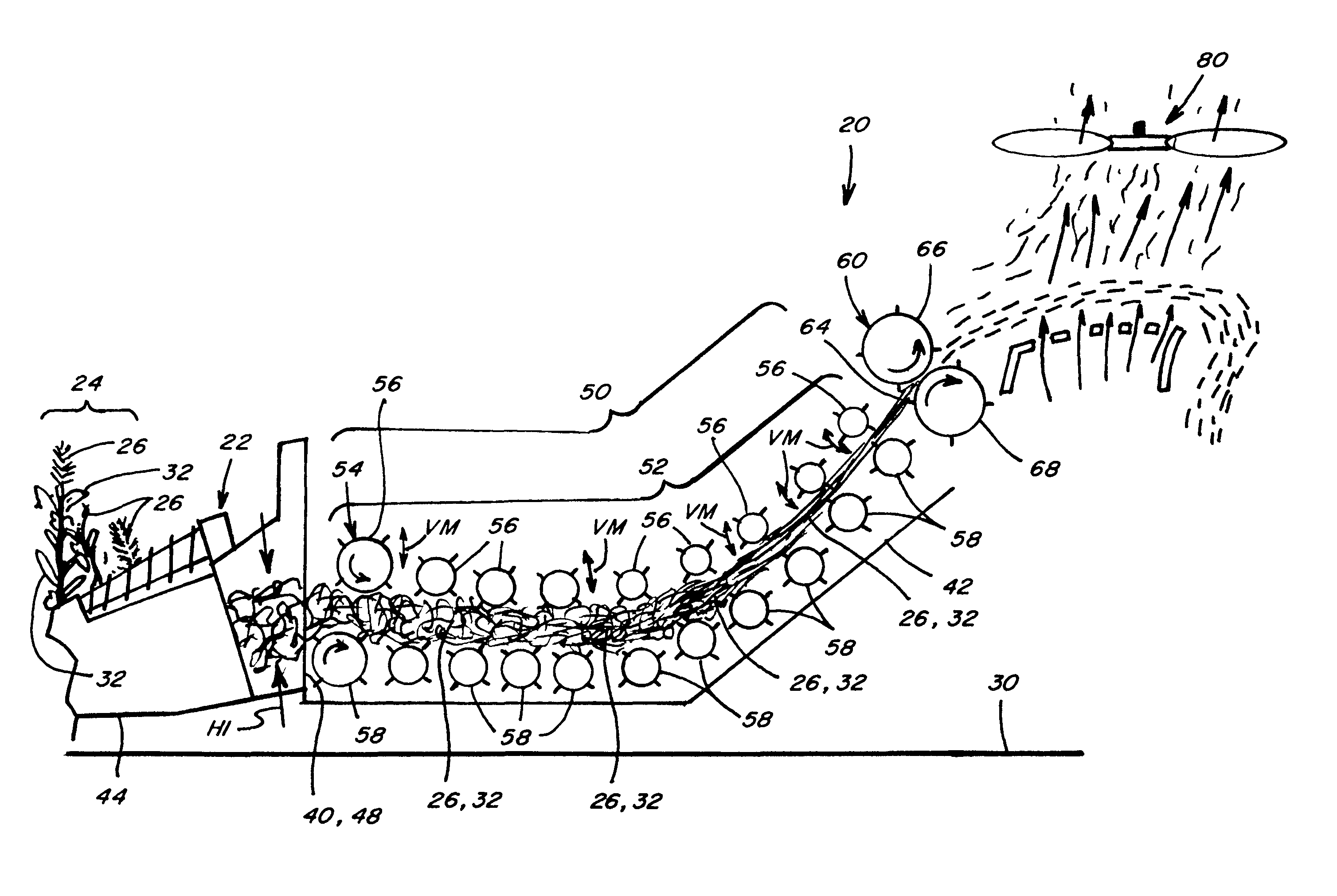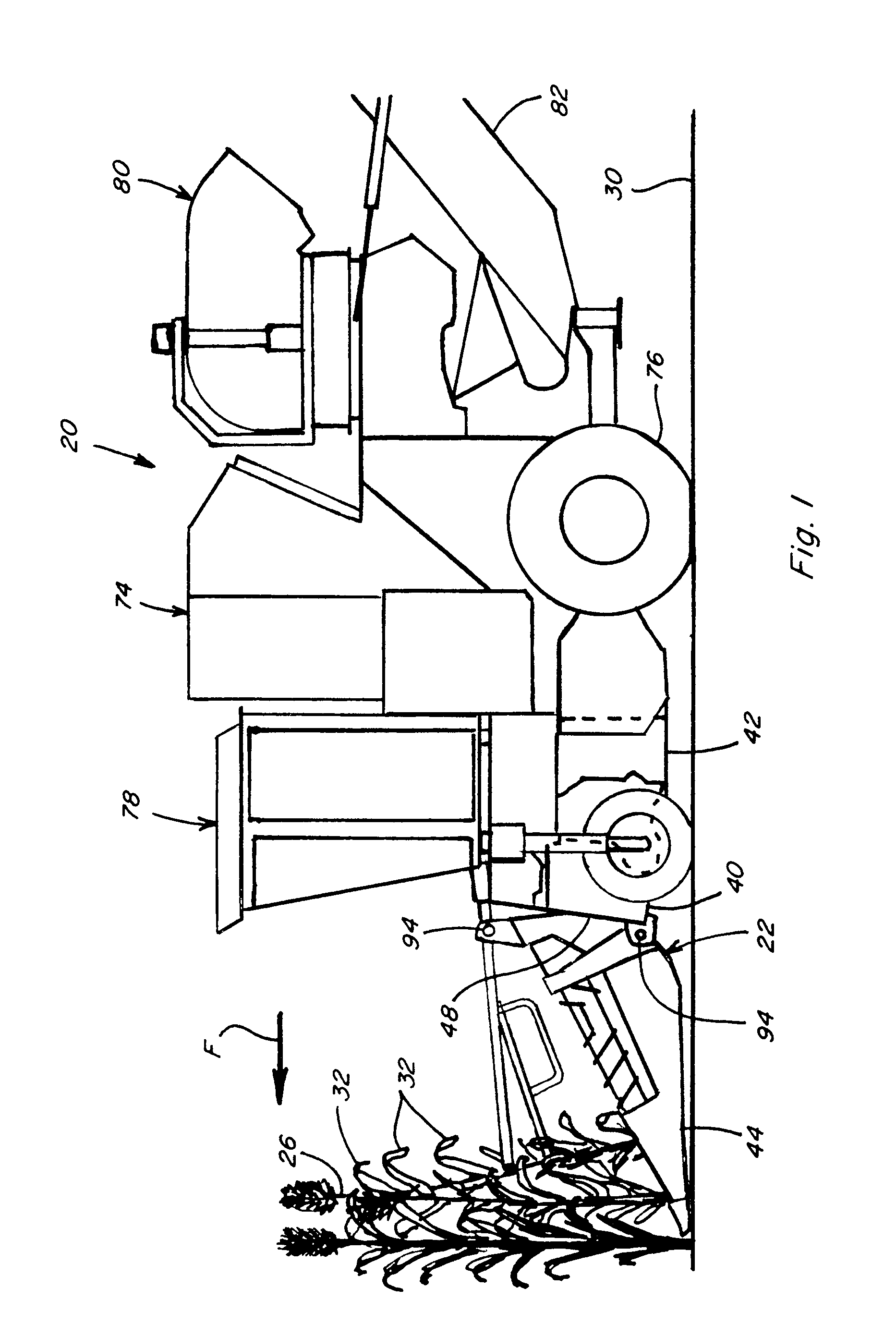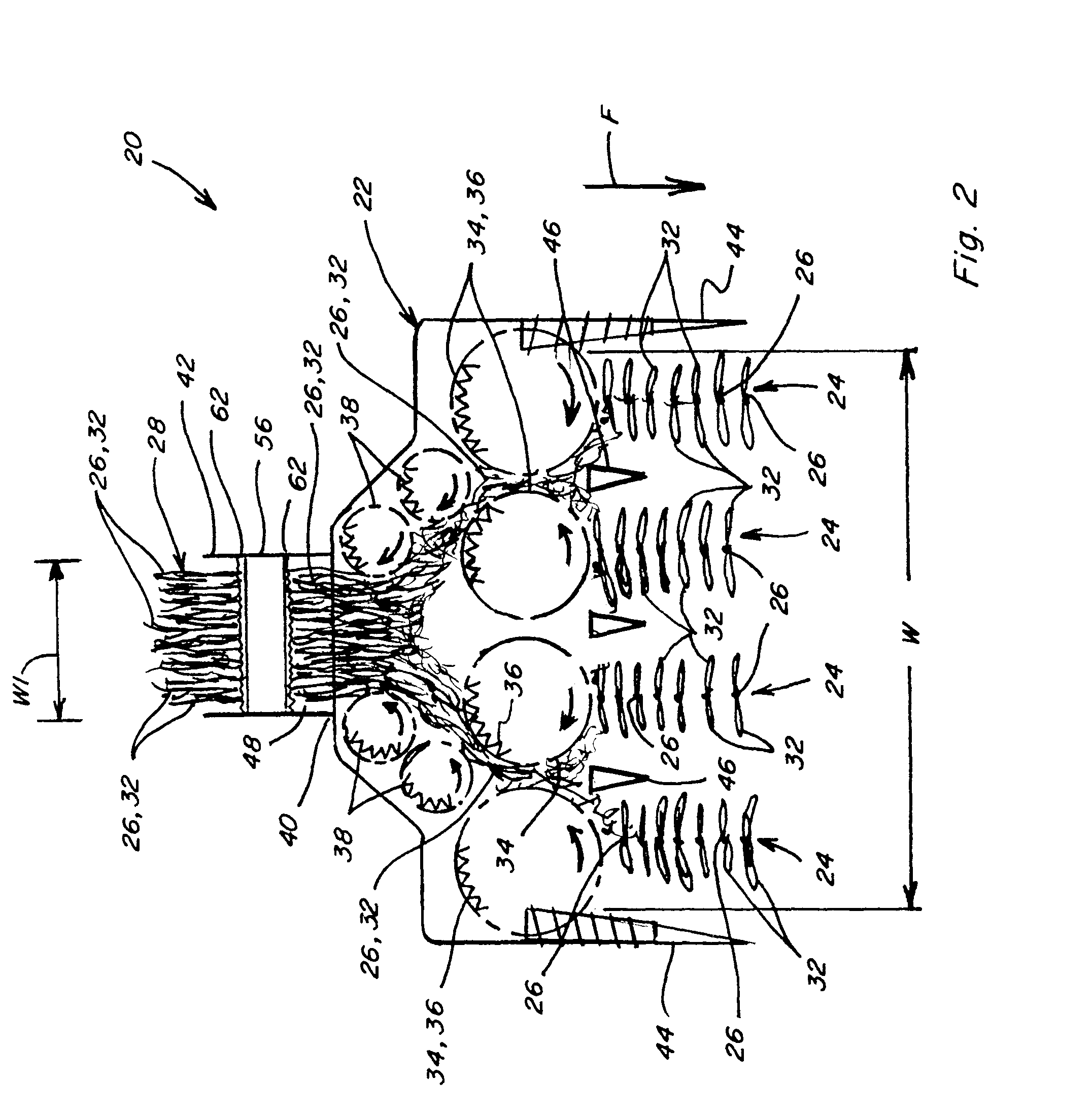[0009]What is provided is a harvesting system and method that provides the annual duty cycle and billeting capabilities of sugarcane harvesters, with a row insensitive plant cutting and gathering capability, suitable for harvesting tall, stalky plants such as sweet sorghum and the like, which overcomes one or more of the disadvantages and limitations set forth above.
[0011]According to a preferred aspect of the invention, the harvesting system and method utilize a crop cutting header carried on the front end of a frame of the harvester, configured and operable for cutting any number of stalks or canes within a frontal area or extent of the header. A suitable header can comprise, but is not limited to, a conventional commercially available drum type forage harvester header, such as those available from Maschinenfabrik KEMPER GmbH & Co. KG of Germany. The preferred header has several large diameter rotating cutter drums across its forwardmost edge so as to be capable of simultaneously cutting stalks or canes encountered at any location across the width of the header, and includes gathering apparatus operable in cooperation with the cutters for rapidly laying down the cut stalks or canes in overlapping relation to each other on the header externally of the harvester frame, gathering them into a rearward flow, and rapidly and continuously conveying the flow rearwardly into an inlet opening on the front end of the harvester.
[0013]In the above regard, it should be noted that, at this point in the process, leaves will not have been significantly removed from the stalks or canes, and thus comprise a portion of the flow. It is these leaves and other foliage that are desirably compressed by the series of transfer rollers, to bring the stalks or canes closer together prior to cutting by the billet cutter. This compacted state is advantageous and necessary, as the stalks or canes are better exposed for cutting and are less likely to pass through the billet cutter uncut or only partially cut, or to jam up prior to entry into the billet cutter.
[0014]In light of the above, as a preferred embodiment to achieve the desired reduction in thickness of the flow, at least an initial or horizontal forward portion of the sequence of transfer rollers comprise a transfer roller unit including an array of lower rollers and upper rollers, arranged in a vertically offset manner, that is, without the upper rollers being disposed directly over the lower rollers. The upper rollers are optionally supported to allow vertical movement, preferably about an offset pivot, so as to be biased downwardly by their own weight. As an additional option, yieldable biasing elements such as springs or the like, or an adjustment mechanism utilizing drivers such as cylinders, can be used if desired or required for providing a desired level of compaction of the flow for forming it into the mat. This optional ability to move vertically enables the rollers to individually self adjust height wise, for changing a vertical extent or height of the feed passage at that location to accommodate variances in the thickness and also density of the crop flow, while still acting to press down on and reduce the thickness of the flow while maintaining the required rearward movement or throughput. As another advantage, this allows the relatively long stalks or canes to make a relatively smooth transition from generally horizontal to an upwardly inclined orientation without damage, e.g., severe bending, crushing, etc., that could result in jamming or plugging the feed passage.
[0015]As an operational example, the initially relatively thick or tall flow of stalks or canes, which, as a non-limiting example, can have a cut length of 3 meters or more, is driven rearwardly by the feed rollers, into the feed passage between the upper and lower rollers of the transfer roller unit. These rollers exert the initial vertical compacting force or pressure against the flow to flatten it, mainly to compact the associated foliage, e.g., leaves. In this regard, it should be noted that the stalks do not enter the feed passage in a single file sequential end to end order such as with a sugarcane harvester. As a result, the stalks or canes will overlap longitudinally, and some can be diagonally oriented so as to cross others. As a result, the rear or downstream ends of some of the stalks or canes that have passed between more rollers can be initially more compacted than the forward or upstream ends. To facilitate throughput, at least some of the rollers preferably have suitable surface features such as cleats or ribs, at locations about their outer circumference, configured to grab the stalks for conveying them rearwardly.
 Login to View More
Login to View More  Login to View More
Login to View More 


